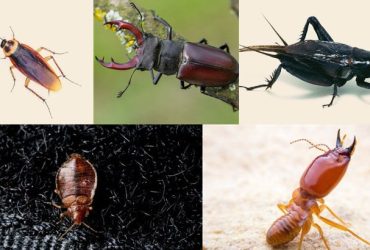Human beings know more about what’s on the moon than about the deepest darkest parts of the ocean. A vast majority of it remains unexplored and a complete enigma because of the intense water pressure in the deepest recesses. Jellyfish are one of the biggest puzzles aquatic life has posed to humans.
They have extraterrestrial-like anatomy, they lack brains, blood, or hearts, and some of them are even immortal. Here are some of the craziest types of jellyfish that linger in the ocean’s darkest depths.
What Is a Jellyfish?

There are many types of jellyfish, but first, what is a jellyfish? According to Britannica, “jellyfish” is a term for a planktonic marine member of the class Scyphozoa (phylum Cnidaria), which is a group of invertebrate animals involving approximately 200 described species, or of the class Cubozoa.
Jellyfish are among the most intriguing and complex creatures of the marine world, and they come in countless varieties. Some are deadly, some friendly, some glow in the dark, some are immortal, and some are almost transparent, which is close to invisibility.
Not only do they have powers humans dream of, but they are also one of the Earth’s oldest animals with the earliest fossils dating back to 600 million years. They’ve survived 5 major mass extinctions responsible for wiping out around 70% of all species to have roamed the Earth and seas.
11 Types Of Jellyfish
1. Crystal Jellyfish
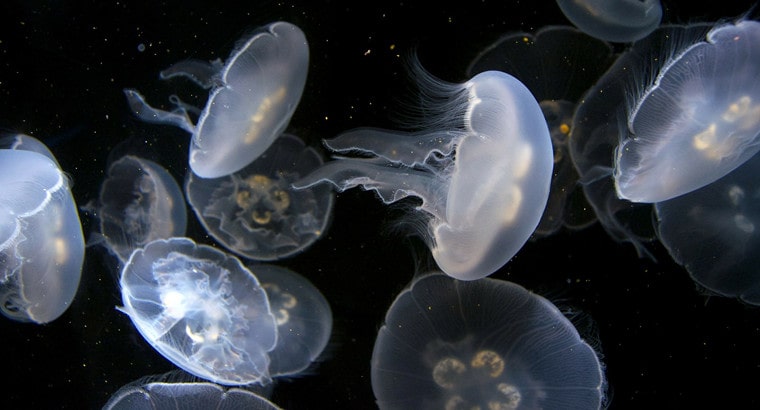
Crystal jellyfish is one of the oddest types of jellyfish on this list. They look like something out of a fairy tale or science fiction. Crystal jellyfish have a near-transparent body, hair-like tentacles, and are bioluminescent.
This comes from the 100 tiny light-producing organs lining the outer bell. However, crystal jellyfish don’t normally glow unless they’ve been provoked.
Crystal jellyfish have often been caught to extract the two proteins involved in producing this light, aequorin, and a green fluorescent protein. These proteins are used in neurological and biological experiments for detecting calcium. Crystal jellyfish feed primarily on other smaller types of jellyfish so they’re also cannibalistic in nature.
2. Bloodybelly Comb Jellyfish
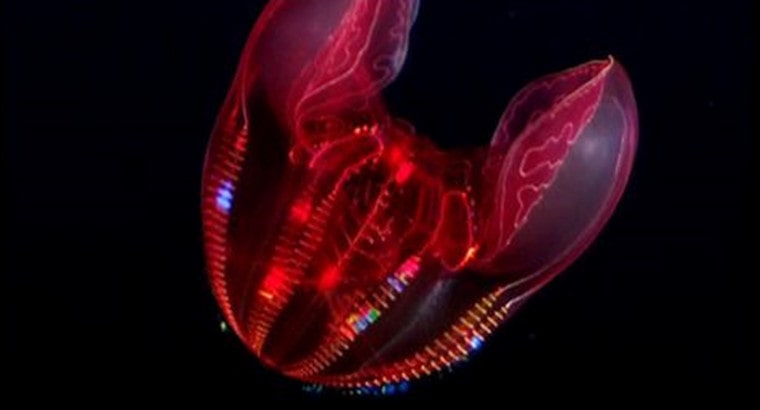
Image source: Pinterest
The bloodybelly comb jelly, also known by its scientific classification as Lampoctesis Cruentiventer, is a species of jellyfish that is recognized by its blob-like appearance and bloodshot red stomach.
Hence, the name “bloody belly.” It is part of the genus family, Lampoctenidae, which consists of comb jellies. Comb jellies are notable for the groups of cilia that they beat continuously to push themselves through the water.
They appear sparkly but that’s actually due to light diffraction or refraction through their tiny transparent cilia. Bloodybelly combs live at depths where it’s so dark, they are invisible to predators. Analysis hasn’t confirmed where they live, but you can expect to see them in midwater habitats from time to time, approximately 1200 feet and below.
3. Cauliflower Jellyfish
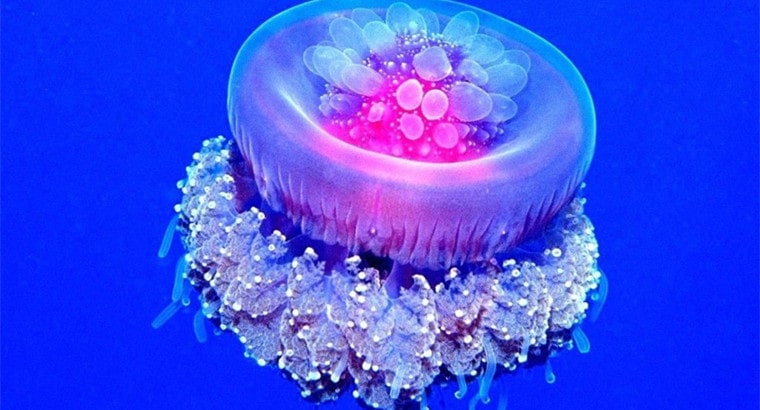
Image source: Pinterest
The cauliflower jellyfish, also known as the crowned jellyfish and by its scientific classification Cephea Cephea, is a common species of jellyfish that resides in the tropical waters of the Indo-Pacific region to Northern Australia. They’re purplish-blue in color and grow up to 6 inches in length.
The crown atop its bell gives it the distinct shape and appearance of a cauliflower; however, scientists are still not aware of the function this protrusion serves.
This jellyfish has a thin skirt of cilia on the side of its bell that helps to propel it through the water. However, it’s probably not fast enough to evade fishermen because this particular jellyfish is favored as a delicacy in both China and Japan.
4. White-spotted Jellyfish
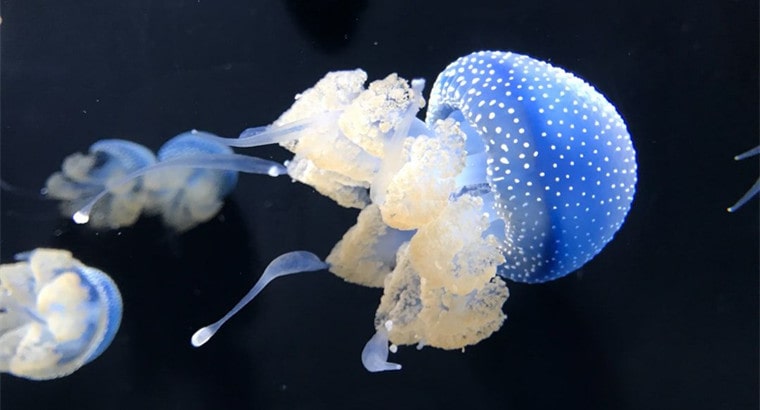
Image source: Pinterest
White-spotted jellies, classified as Phyllorhiza punctata, is a species of jellyfish native to the tropical waters of the western Pacific, from Australia to East Asia. They’re called white-spotted after their freckled crown and have tentacles that look like scattered clouds.
White-spotted jellies’ venom is mild so their sting doesn’t hurt much or pose a threat to human beings. What makes these creatures fascinating is how they feed.
Since their venom lacks power, these white-spotted jellies feed by filtering zooplankton through the water. They sift through around 13,000 gallons of water a day to catch enough of their favorite snack.
They are an invasive species that prefer to swim in swarms. Since zooplankton is an essential component of the marine food web, it’s impossible for fish, crustaceans, and many other marine mammals to survive in an area where white-spotted jellies thrive.
5. Black Sea Nettle Jellyfish
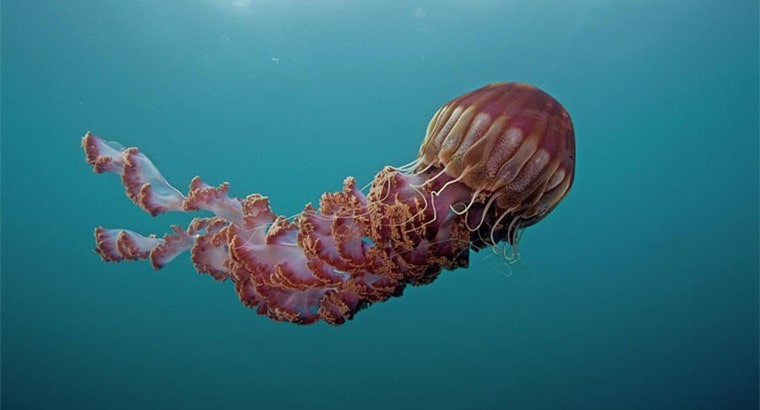
Image source: Pinterest
The black sea nettle jellyfish, classified as Chrysaora, is a newly discovered species of jellyfish that reside in the Pacific Ocean. These creatures take their name from their coloration, a dark shade of red with a completely black bell. The black sea nettle is sometimes also informally referred to as simply the black jellyfish or sarlacc jellyfish.
Black jellies can be huge. The bell can grow up to a meter in diameter, with stinging tentacles that can grow up to 6 meters in length. They use their venom to kill small prey like zooplankton or other jellyfish, but it is non-lethal to humans.
They’re not found commonly in the wild and are hard to raise in captivity, so there’s still much that scientists don’t know about this mysterious breed.
6. Fried Egg Jellyfish
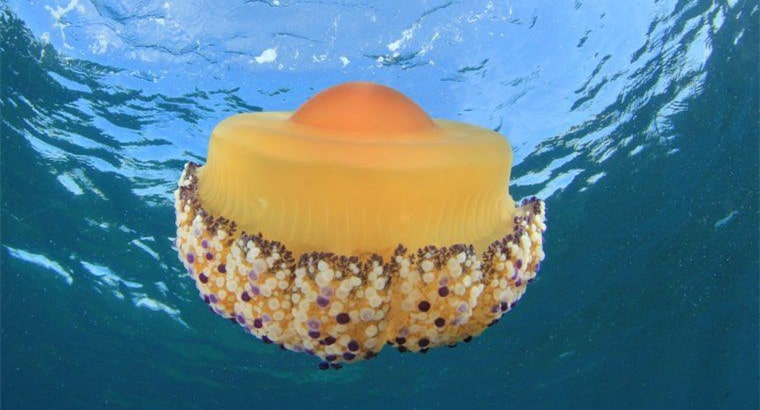
Image source: Pinterest
If you ever look at a fried egg jellyfish, you’ll understand immediately how it got its name. The bell of a fried egg jelly bears a resemblance strong enough to mistake it for an omelet. Fried egg jellyfish, scientifically classified as Phacellophora Camtschatica, can be found in the Atlantic Ocean, Mediterranean Sea, and the Aegean Sea.
A fried egg jelly’s bell can grow up to 5ft in diameter. They have truncated mouth arms located on the side of their bell, which is disproportionate in length. This makes the dome appear as if to have blue and white pebbles around it.
They spend a lot of their time motionless but are actually quite adept at swimming. They have a very weak sting, so harmless that not only are humans unaffected but sometimes fish seek shelter under their tentacles to swim through currents.
7. Flower Hat Jellyfish
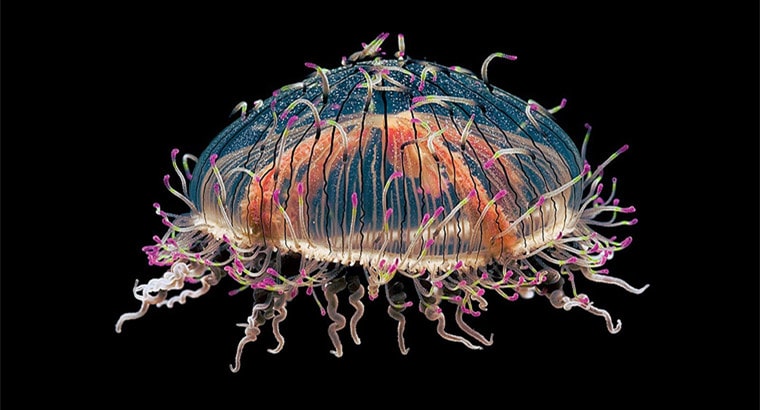
Image source: Pinterest
A common pattern you may have picked up on by now is how jellyfish are often named based on what they immediately look like. It’s an easier way to remember them because jellyfish come in more shapes, colors, and sizes than fruits.
The flower hat jellyfish, classified as Olindias formosus, looks like a jellyfish but is technically in another class from true jellyfish called Hydrozoa.
It’s regarded as one of the most beautiful types of jellyfish observed in nature, and they’re also incredibly rare. They’re native to the waters of the Western Pacific, ranging from Southern Japan all the way to Brazil.
Flower hat jellies are distinguished by their translucent bell pinstriped with opaque bands and lustrous tentacles. While they’re pretty to look at, you need to keep your distance. Their stings aren’t deadly but are considered painful to humans and can leave a bright rash.
8. Atolla Jellyfish

Image source: Pinterest
The atolla jellyfish, classified as Atolla wyvillei, is a common jellyfish that can be found in all oceans of the world. Like most mid-water species, it has a deep red color with bioluminescent abilities. However, it does not use these abilities to lure in its prey. It only glows to scare off predators swimming nearby.
When attacked, it surprises the predator with a series of flashes. This also alerts other predators that would be interested in the attacker rather than itself. This nifty little trick has also earned it the nickname “Alarm Jellyfish.”
9. Mangrove Box Jelly
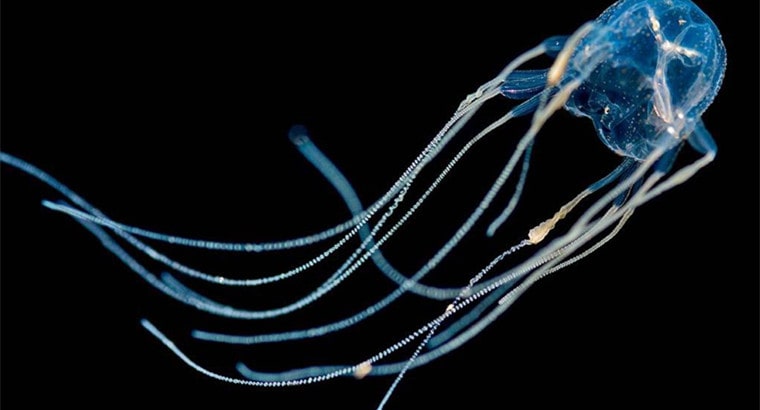
Image source: Pinterest
The mangrove box jelly, classified as Tripedalia Cystophora, is one of the smallest jellies in the sea, growing up to about the size of a grape. Their tentacles can reach up to 1-1.5 inches in length.
It’s native to the Caribbean Sea and Central Indo-Pacific and has the misfortune of living in one of the most endangered ecosystems on the planet, Mangrove Forests.
Mangrove box jellies have a boxy-dome-shaped bell that allows them to move more rapidly. They swim by vigorously expanding and contracting their bells to displace the water in front of them. They don’t have a powerful sting. Most people who have raised them as pets tend to experience almost nothing when stung.
10. Upside-down Jellyfish
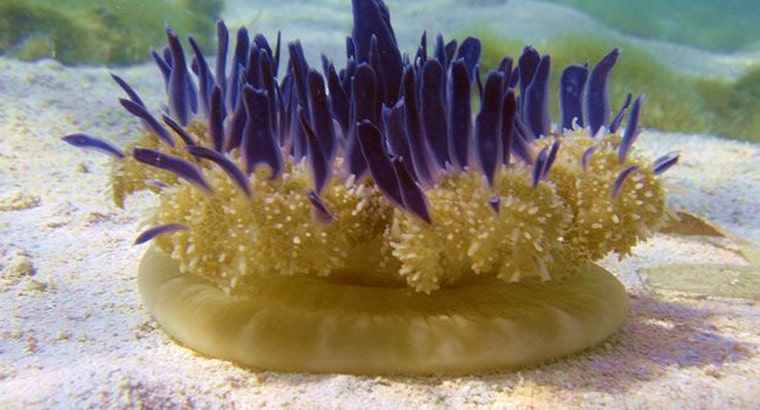
Image source: Pinterest
The upside-down jelly, classified as Cassiopea, are the only members of the Genus Cassiopeia. In other words, it’s one of its kind. Why? Because they’re literally upside down. Upside-down jellies rest their heads on the surface of the seabed and manage to swim with their arms and tentacles pointed upwards.
Doing so exposes the dinoflagellates, or algae living in their tissues, to the sunlight, allowing them to photosynthesize. Upside-down jellyfish share what is known as a symbiotic relationship with this type of algae.
A symbiotic relationship is when two organisms form a relationship that’s beneficial to the survival of both or sometimes just one. The relationship can be mutualistic or parasitic. Upside-down jellyfish can be found in warm coastal regions across the world.
11. Lion’s Mane Jellyfish
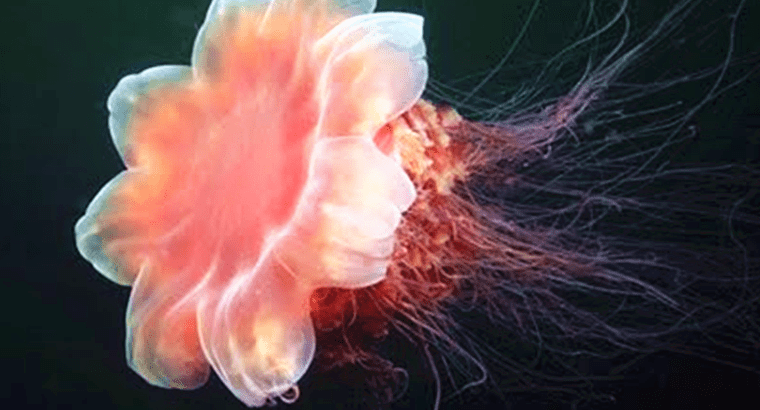
Image source: Pinterest
The lion’s mane jelly, classified as Cyanea Capillata, is the largest species of jellyfish ever discovered. The largest specimen ever recorded was in 1865 and it had a bell diameter of 7 feet and tentacles almost 120 feet long. They are humongous and called the lion’s mane because of the hundreds of long brownish tentacles that are reminiscent of a lion’s mane.
The lion’s mane jelly can be found in waters all across the world. Although they have a painful sting, human encounters with a lion’s mane usually don’t end in fatality. The sting is only powerful enough to incapacitate small prey such as zooplankton, small fish, and other jellies.
A Few Parting Words
Jellyfish are, simply speaking, sea critters. They lack a brain, blood, bone, or even hearts and are only composed of three layers. They’re such simple creatures and yet provide a fascinating new dimension to the possibilities of marine life here on Earth.
There are likely countless types of jellyfish or perhaps other sea creatures with unworldly characteristics that are yet to be explored.








